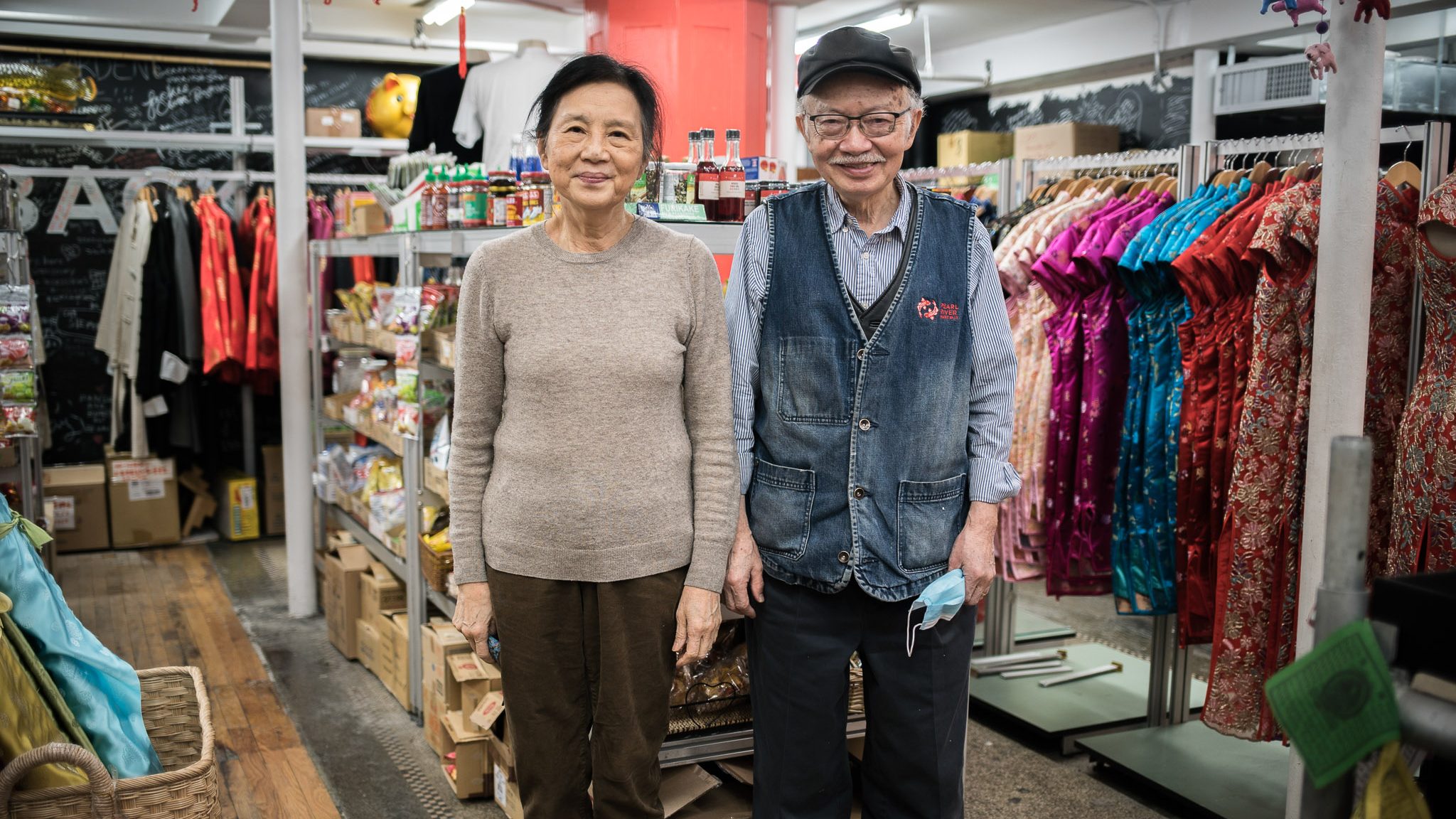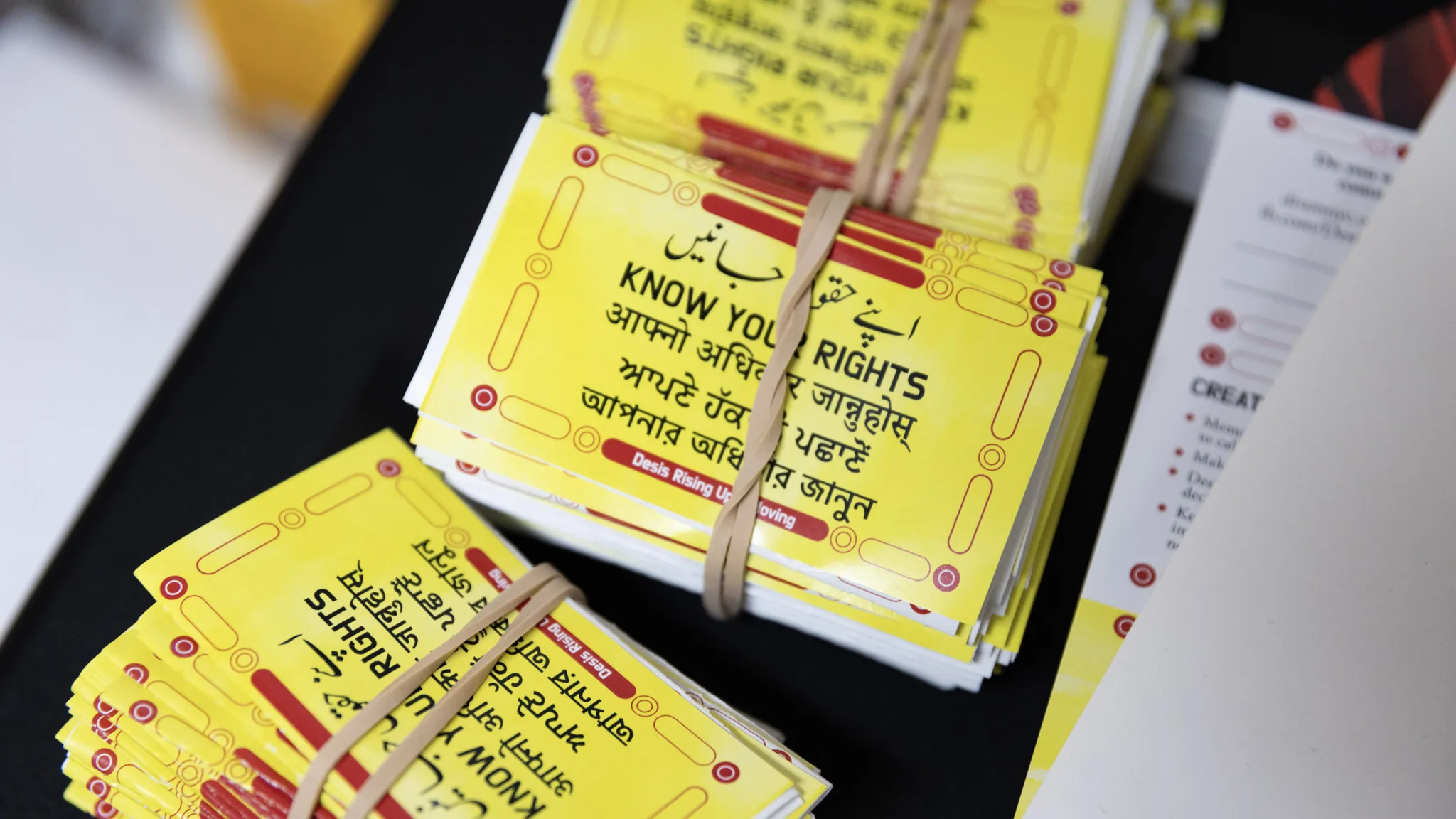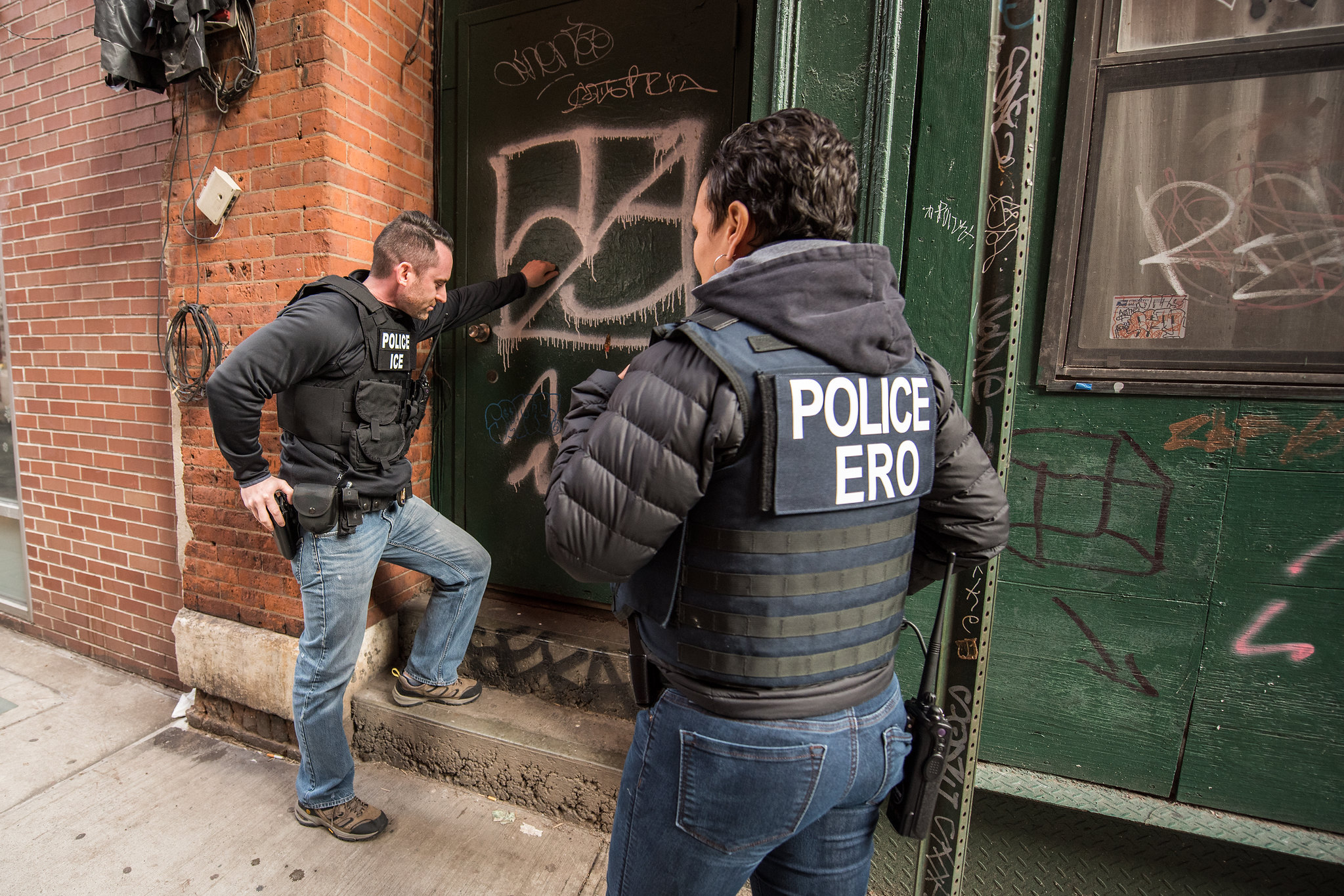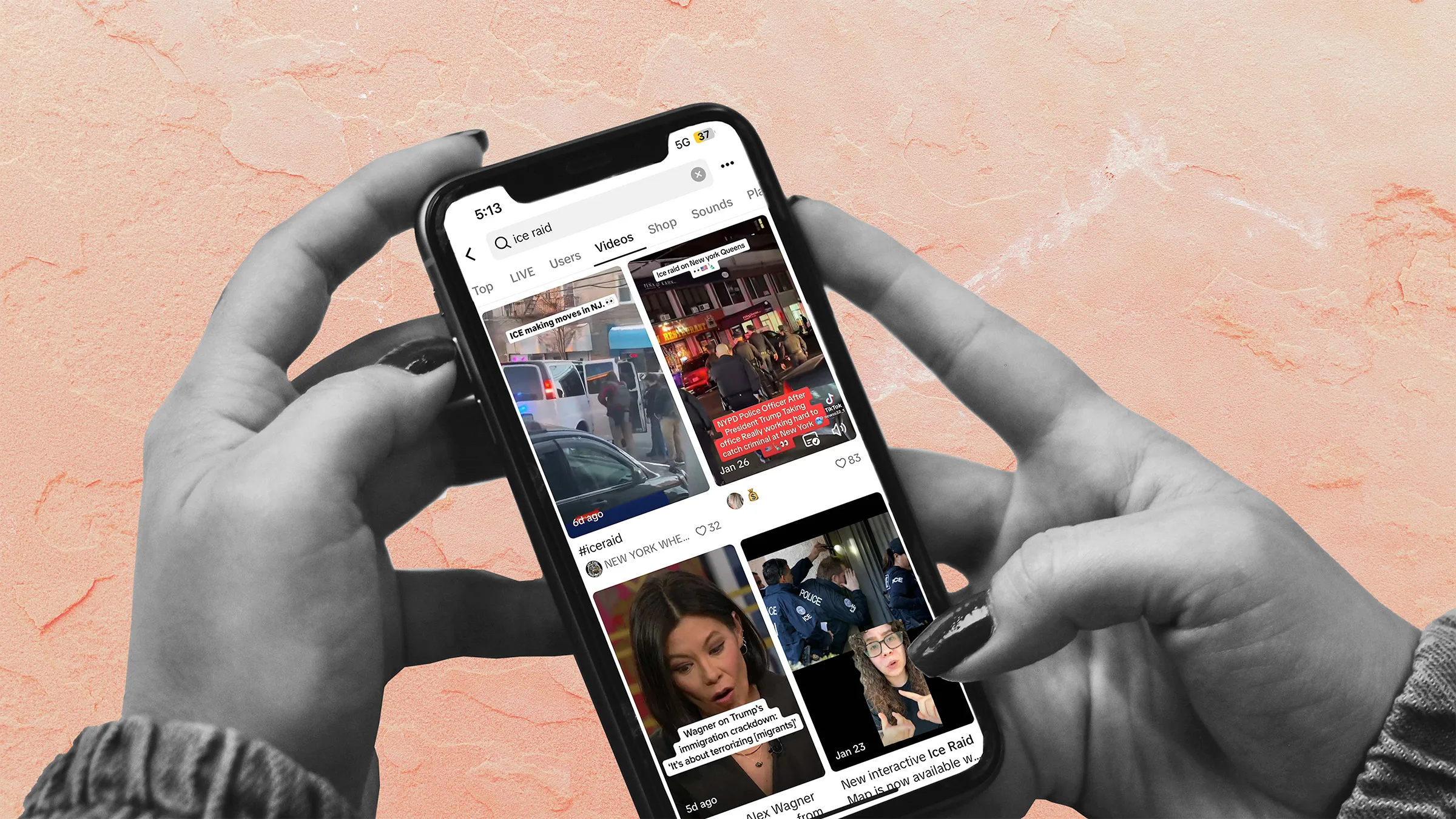This story was published in partnership with Epicenter NYC, a newsletter about creating community in New York City. Subscribe to its newsletter here.
Pearl River Mart is a place that to most New Yorkers is known as “that store that sells Chinese tchotchkes,” as one friend put it. But half a century into its existence, it can also tell a number of stories about the New York that immigrants inhabit.
On December 4, the store announced on its Instagram account that they would have to shutter their large flagship store in gentrifying Tribeca after a dispute with their landlord. Like many other stores in New York City, Pearl River Mart has had to adapt and struggle through much of the pandemic to survive. The business’ president, Joanne Kwong began putting more goods online, reducing staff and canceling events. And in the continuous battle to stay afloat, this was one fight they lost.
“Thank you, Tribeca. You gave us a home when we needed it the most. We’ll still be here through the new year and look forward to rebuilding again,” Kwong announced in a Pearl River Mart Instagram post.
“Our negotiations with the landlord have stalled and he has made clear his desire to use the courts to recoup every dollar he can, not just from our business, but from our personal assets. I cannot describe the toll that this situation has taken on our family and longtime employees, especially knowing that after 49 years of serving the downtown community, the Chens deserve to be looking forward to a quiet retirement, not years of stressful litigation,” Kwong wrote in a press release.
Also Read: A Family Trip Turned Into an Immigration Nightmare
Like many other small business owners Pearl River Mart has not been paying full rent during the pandemic and their landlord has been asking them for this money. While local and the federal government have implemented temporary laws — eviction moratoriums — to prevent landlords from booting tenants from their homes and their stores, politicians have yet to decide on what store owners like Kwong will have to do with all the rental debt they are accruing. This forces a cruel calculus upon small business owners like Kwong: stay and potentially risk losing any savings you have left or leave. Unlike big corporations, Kwong says she and her peers can’t afford to wait and hope for the best legislative outcome.
“Everyone is guessing on what the legislators will decide. Everyone is placing horse bets right now,” said Kwong. “We don’t have the bandwidth to play around.”
It will be the second time the Pearl River Mart flagship store has had to move because of increased rental pressures. Currently, its plan is to move to another location after the Lunar New Year sometime in March. But the move also represents a continuous progression of Pearl River Mart having to move to smaller and smaller locations throughout time (the store does still have three other locations throughout the city, one at the Museum of Chinese in America which is currently closed and two smaller stores in Chelsea market).
The coronavirus-induced recession is at risk of accelerating gentrifying trends that were already forcing their way into ethnic enclaves before the pandemic. In New York City, Asian Americans have been hit particularly hard: applications for unemployment benefits rose from 3.4% in February to 25.6% by May 2020, which according to a report from the Asian American Federation was “the largest increase among all major racial groups.” And if recessions are speeding up existing trends, then stores like Pearl River Mart and many of their lesser-known peers may be pushed out of their storefronts entirely.
Institutions that were already New York’s best-kept secrets within immigrant enclaves may get lost without us ever knowing their origin stories, like that the hole-in-the-wall that (arguably) sold the best banh mi in town or that grocery store that carries a certain brand of fermented tofu.
Pearl River Mart as a Political Statement
When Ming Yi Chen, 81, opened the store in 1971, he did not anticipate operating it longer than two years. A professor with a PhD in Chemistry, he had been working his way into an academic career and really didn’t anticipate becoming a small business owner.
Mr. Chen had become increasingly active in political movements after he arrived in Northern America first as a graduate student in Toronto and then as a PhD student in Chicago. When he conceived of the store, US-China relations were finally warming after decades of Cold-War-fueled tensions. For the first time since 1949, American journalists were allowed to visit China when the country’s table tennis team invited the American national team to visit. The event was globally dubbed “ping pong diplomacy.”
Mr. Chen wanted to open up his own community of Chinese immigrants to the greater New York population, he said. What better way to do this than to create a space where people of all cultures could convene to learn more about China, a country that had been publicly shunned as international pro-democracy and anti-communist sentiments tensions pitted the U.S. against the socialist republic. And so, Mr. Chen opened a store with Chinese goods, partly to start a business but mostly to make a political statement to reinforce the need to embrace and learn about Chinese culture during a time when it was mostly vilified.
What started as a political act and temporary place for political gatherings though, soon revealed itself as a much needed community service. At the time of opening, the store served as a vital lifeline to the homeland for many immigrants from China. His customer base was probably 90% Chinese, said Mr. Chen. White customers, most were activists and students, he said, came in to buy the occasional Communist propaganda poster (it was the 70s and adhering to communism was a way of rebelling).
Chinese restaurant and store owners from the tristate area would flock to Pearl River Mart on Mondays, the day when their own restaurants were closed, to buy products that made them feel at home in a foreign land. The store’s neighbors would come in to get knick knacks throughout the week.
There were goods like hand towels with the words “Good Morning” embroidered on them in English and Chinese; the undershirts that many of their customers used to wear back in China and were so happy to find in New York (these shirts were “less itchy” than the American kinds, Mr. Chen said). The shelves were stocked with Pearl River soy sauce that would give the home cooking of many customers a special taste of umami.
Mr. Chen explains that some of the success of the store was due to his ability to import these goods at a time when few other stores could or would dare to carry them. (Mr. Chen was likely bribing his way through multiple customs systems, his daughter-in-law Kwong told me, chuckling.)
Also Read: Chinese Students in the US Caught Up in Geopolitics and Trump’s Immigration Crackdown
“I remember very clearly every Monday … the whole family come down and drive down to New York, come to our store, and buy everything they need at home,” said Ching Yeh Chen, 74, who started helping to run the business in 1980 after she married Mr. Chen.
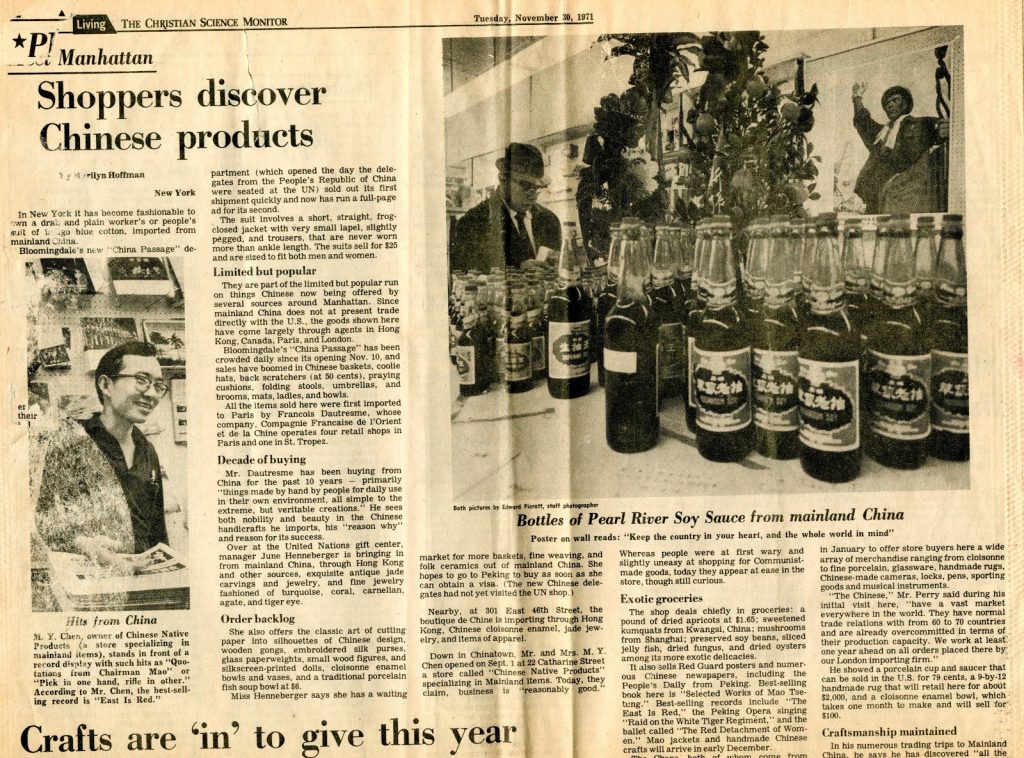
The store was also a bookshop and a movie theater: Chinese intellectuals from all over New York City would come and purchase Chinese magazines or watch one of the films that Mr. Chen was screening at his store at the time, as a way to keep up with the politics of the country they left behind.
And so, Pearl River Mart became both marketplace and town square: it was a kind of informal community space where Chinese immigrants from Thailand, Singapore, China, Philippines and other countries would convene, shop and chit chat. In some ways, the project, which Mr. Chen dubbed the “friendship store,” became a physical manifestation of what Chinatown had already become for many of the immigrants who had arrived in the city: an aggregator for the ethnically Chinese diaspora.
“We were [putting on many] meetings, you know, study meetings, and we would show you films from mainland China. We were just into finding out more about what’s going on in mainland China, you know, which is our mother country,” said Mrs. Chen.
The Darling of the 1990s
In the 1990s and into the 2000s, the Chens saw an ever-growing number of non-Chinese customers finding delight in their products. An appetite to pair kitsch with couture had brought a new kind of spotlight to the store. Celebrities and fashion designers started coming to Pearl River Mart, scouring its shelves for mesh slippers, silk dresses and other accessories.
Singer Christina Aguilera, actress Laura Dern and Sex and the City star Sarah Jessica Parker were among those who would brag about their Pearl River Mart finds in fashion magazines. Celebrities would pair dresses that cost thousands of dollars with slippers that would cost $3.99. Parker even brought the Oprah Show to the store in 2005 and gushed about its “unbelievable dishes,” according to Oprah.com.
“In the 90s, press people, they discovered us. We were there for a long time but they just discovered us,” said Mrs. Chen, in what could be described as an early act of Columbusing.
As Kwong and I leafed through the reams and reams of newspaper and magazine clippings that Mrs. Chen had carefully collected over the years, we alternately cringed, laughed and fawned over them. Some fashion features, like an article titled “Asian Persuasion,” felt like the kind of cultural appropriation that got a pass in the 1990s and that has aged out of mainstream acceptance.
The articles revealed an illustrative history of the role that Pearl River Mart played in New York City’s fashion scene at the time: there were the silk dresses that the New York Times’s Styles section photographer Bill Cunningham captured. There were the countless fashion magazines that featured items from Pearl River Mart in themed product roundups for home decor or suggested fashion looks. Other articles in the local press pointed out how customers could get great bargains at the store.
“We had no idea that this was going to happen. They always come to pick up something and publicize it. We didn’t spend one penny doing any advertisement,” said Mrs. Chen
Their expanded customer base allowed them to expand their inventory to include goods from all over Asia. And even though the store had been steadily growing through the 1980s, adding a second 15,000-square-feet location in 1986, the Chens were able to move to an even bigger storefront more than double that size — a whopping 30,000 square feet — in bustling Soho in 2003. It was perhaps the peak of their business which was employing 40 people at the time and carried roughly 20,000 items.
But this phase didn’t last very long. Just five years into being in Soho, Pearl River Mart started facing one blow after another. First, there was the Great Recession of 2008 which slowed consumerism due to mass layoffs and an achingly slow economic recovery. Then, perhaps more importantly, there was the arrival of online shopping that became ever more ubiquitous as people started acquiring smartphones. (Remember, the iPhone first hit the smartphone market in 2007).
Like many other retail stores, Pearl River Mart had seen its sales slow down once Amazon and other e-retailers became household names. Suddenly, the cheap goods that Pearl River Mart offered on its shelves could easily be obtained through the click of a button.
“The niche we were originally known for had kind of been compromised, “ said Mrs. Chen.
The final sign that the boom times were over was when their Soho landlord increased the store’s rent five-fold, raising it to $500,000 from $100,000 per month in 2015.
“Yeah, we realized that that phase is over. And you have to change,” said Mrs. Chen about this chapter of Pearl River Mart.
The Chens met with some investors who were interested in using the brand recognition to revamp the business, but the couple was worried about how the business’s philosophy would change if it were corporatized. Their mission was always community-driven. What would happen if an investor put profit above that?
That’s when Joanne Kwong, their daughter-in-law stepped in to take over the helm of the store.
“I had a 20-year career before this, took my skills and put them into this enterprise,” said Kwong, who worked as an attorney for two decades. Kwong grew up in Queens, New York to parents who are Chinese immigrants from the Philippines and who met her husband Gene while they both attended Columbia University. In 2016, she decided to take on the mission bringing the Pearl River Mart ethos into the digital age.
Her experience in marketing and advocacy proved vital for this next chapter of Pearl River Mart. Forty years into the store’s existence, Pearl River Mart finally had a marketing and social media department.
“The second generation takes all these skills and then translates it into this experience,” Kwong said.
Their social media accounts have been highlighting other businesses in the community, partnering with restaurants and stores to raise money for Chinatown residents, and have been responding to timely issues that are important to the Asian American community.
Also Read: Chinese Immigrant Artists Struggle to Break Into New York City’s Art World
For instance, when the story of a group of white women offering $425 mahjong sets went viral, Pearl River Mart posted about the significance of the game on its website and social media channels. Many critics had voiced concern over the pricey mahjong tiles because its white creators had failed to honor the cultural importance of the game, calling the women out for cultural appropriation
“To generations of Chinese and Chinese diaspora — including many of us at Pearl River — mahjong is much more than just a game. It represents home, family, belonging, and of course multi-generational trashtalking,” the post titled “The Meaning of Mahjong” proclaimed. “While the game today is played around the world by people of every ethnicity, its history and many points of symbolism should be learned and acknowledged by anyone who claims to love it.”
The post never acknowledged the women who were selling the overpriced mahjong set, but its timing was clearly aimed at the story which was making its rounds on social media at the time.
The Instagram post’s message may just hint at the greater mission that stores like Pearl River Mart have increasingly found during the pandemic: bringing a sense of community to multiple generations of immigrants and formulating a new identity and sense of togetherness within the Asian American diaspora.
Most recently, in the final months of 2020, Asian New Yorkers across generations came together to prepare a lantern installation for Mott Street in Chinatown. They gathered in the empty location that Pearl River Mart will move into in March. Together, they dipped lanterns into polyurethane to make them waterproof.
Among the participants was Corky Lee, a photographer and long-term mentor and friend of many Chinatown establishments. His untimely recent death brought together New York City’s multigenerational Asian American community in ways that Kwong had rarely seen previously.
In many ways, Chinatowns were always a space for recent immigrants to find the foods and goods of their home country. But in equal measure, Chinatowns have become a space for the children of immigrants to find the kind of dishes and things that provided them emotional comfort during their upbringing. For a second or third generation of Asian immigrants, the literal things they grew up with — the kitchenware, toys and foods of their homes — provided a tether to a homeland that they have never lived in, or barely remember.
The transformation of Pearl River Mart marries these two meanings of Chinatown in ways that may pave a new way for immigrant businesses. Kwong hopes this spirit can keep the business alive so they can celebrate the store’s fiftieth anniversary this coming fall.
“My experience is separate from the Chen’s experience, or from growing up in Asia. And I think so many people in the states and in Chinatown are kind of figuring out what it means to be Asian American. They are gaining their voice,” said Kwong about the gathering. “This is a beacon of hope for a better future after covid.”
Also Read: They Are Eligible to Stay in the US. Why Can’t They Get Their Green Cards?
Correction: This was article was updated on Feb. 12, 2021, to reflect the fact that Joanne Kwong met her husband at Columbia University, not law school. A caption of a photo also misidentified Mr. Cheng.
